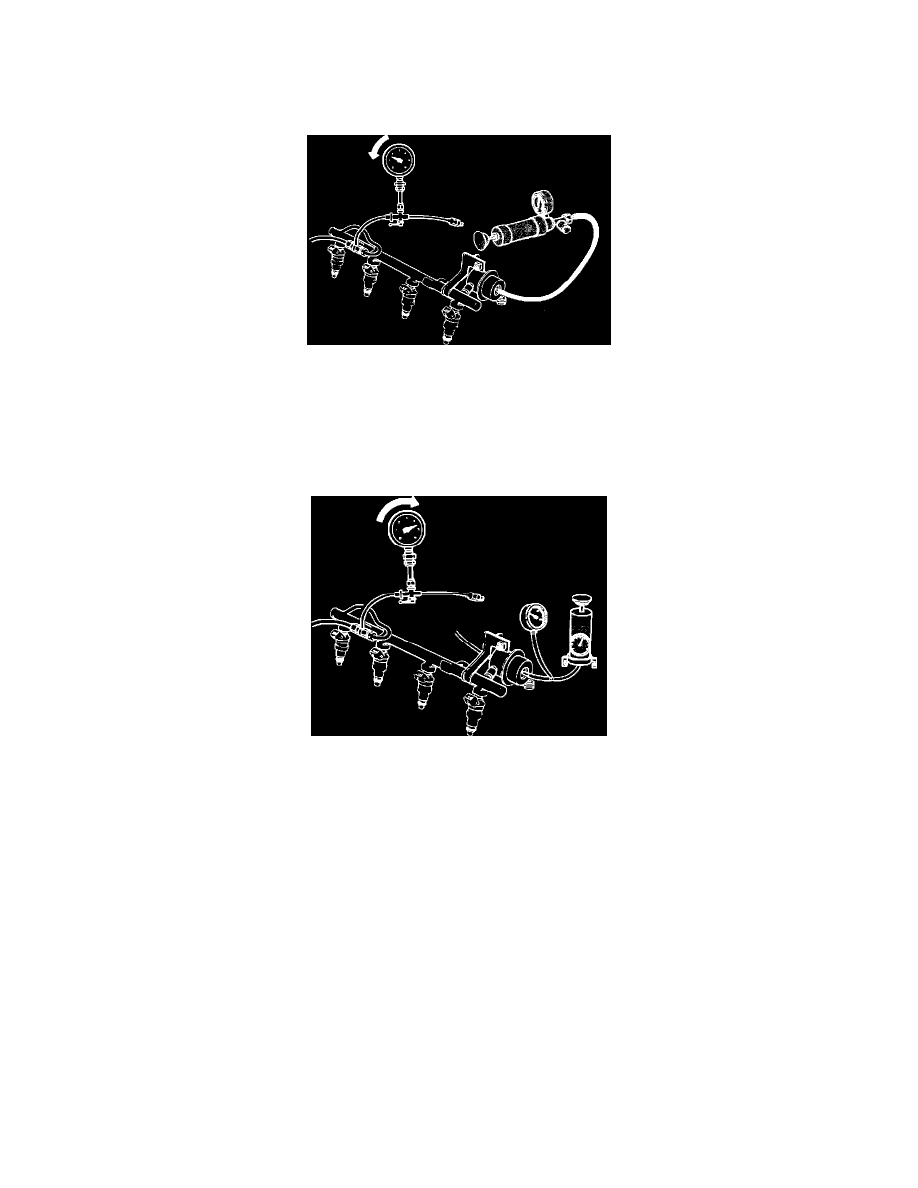940 SE L4-2320cc 2.3L SOHC Turbo VIN 87 B230FT (1991)

If pressure rises quickly, pumps and fuel lines are O.K.. Replace fuel regulator and retest.
If fuel pressure rises slowly, this indicates a blocked fuel filter, tank pump or supply line. Check the individual components and replace as
needed.
If pressure does not rise, main fuel pump is defective. Replace and retest with new pump.
Checking Pressure Regulator
11.
Check the fuel pressure regulator by disconnecting the vacuum hose and connecting a vacuum pump to the pressure regulator.
12.
While monitoring the pressure gauge, apply vacuum to the pressure regulator. Check that the fuel system pressure drops as vacuum increases.
Diaphragm must be able to retain the vacuum applied, no bleed-off should occur.
If pressure regulator does not perform correctly, replace and retest with new pressure regulator.
13.
Disconnect the vacuum pump.
Installing Pressure Pump And Gauge
14.
Connect a pressure tester and gauge to the vacuum line.
15.
Apply pressure and check that the fuel system pressure rises. Fuel pressure should rise at the same rate as the pressure applied to the regulator.
CAUTION:Do not increase fuel pressure above 70 kPa (10.15 psi).
If pressure regulator does not perform correctly, replace and retest with new pressure regulator.
16.
Disconnect the pressure pump.
17.
Disconnect fuel pump relay lead.
18.
Disconnect all test equipment and reconnect all hoses and the relay. Use new washers on the fuel line connectors and replace any plastic tie bands
removed from the fuel lines.
WARNING: Fuel lines are under pressure. When disconnecting fuel lines, cover the connection with a shop towel to protect yourself from the
excess pressurized fuel.
19.
Run engine and recheck fuel line connections for leakage.
